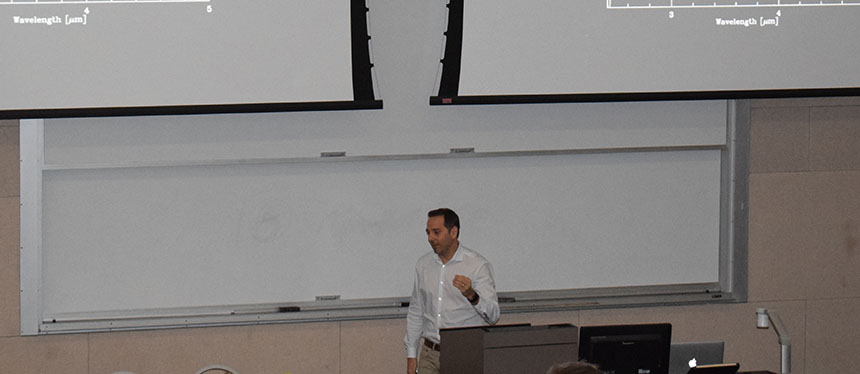villanuevadss
villanuevadss
NASA Planetary Scientist Geronimo Villanueva Talks to Rowan Community about Mars
Is Mars Alive? NASA Scientist Dr. Geronimo Villanueva helped shed light on that question during his lecture as part of the Rowan University College of Science & Mathematics Dean’s Distinguished Speakers Series held Friday, November 10, 2017. Villanueva is a planetary scientist from the NASA-Goddard Space Flight Center who specializes in the search for organic molecules on Mars and on icy bodies. He is the leader for Mars studies for the James Webb Space Telescope (JWST) and scientist for the ExoMars mission. He also serves as Science and Management advisor to several observatories, including Keck, NASA-IRTF and ALMA.
"Right now, most think that Mars is a dead rock, but in the past this was quite different,” stated Villanueva. “During a time period roughly 4000 million years ago, known as the Noachian period, the atmosphere was more dense than it is today and possibly warm enough for liquid water to have existed on the surface.” While there is no liquid water on the surface of Mars today, the ExoMars 2020 rover will include a drill that will dig below the surface looking for water. It will collect samples at a depth of two meters and analyze them with next-generation instruments in an onboard laboratory.
A 2009 journal article by Dr. Villanueva and his team provided evidence for methane on Mars in from data collected in 2003. Methane is a molecule with a short life in an atmosphere of a planet. Evidence of abundant methane in Mars’ atmosphere indicates an active source. “If you find methane on Mars, it could be a sign of life since methane is a biomarker,” asserted Villanueva. The results from the ExoMars mission will help explore the methane puzzle on Mars since underground samples are more likely to include biomarkers, since the current day tenuous Martian atmosphere offers little protection from radiation and photochemistry at the surface.
Exploration of Mars will continue, not only on the surface, but from Earth, using telescopes that are getting more and more sophisticated. In the distant future, manned missions to Mars could also be possible. Dr. Villanueva plans to continue to study Mars using ground-based tools as well as space missions to advance what we know about past and future life on Mars.
